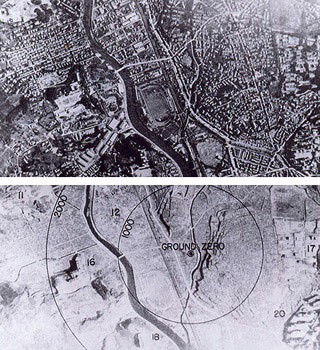
Aerial photographs of Nagasaki, Japan before and after the atomic bombing on August 9, 1945. (Photo courtesy of the United States Federal Government.)
Instructor(s)
Prof. Owen Cote
Dr. James Walsh
MIT Course Number
17.951
As Taught In
Spring 2009
Level
Graduate
Course Description
Course Features
Course Description
This course will expose students to tools and methods of analysis for use in assessing the challenges and dangers associated with nuclear weapons in international politics. The first two weeks of the course will look at the technology and design of nuclear weapons and their means of production. The next five weeks will look at the role they played in the Cold War, the organizations that managed them, the technologies that were developed to deliver them, and the methods used to analyze nuclear force structures and model nuclear exchanges. The last six weeks of the course will look at theories and cases of nuclear decision making beyond the original five weapon states, and will look particularly at why states pursue or forego nuclear weapons, the role that individuals and institutions play, and the potential for both new sources of proliferation and new consequences.


